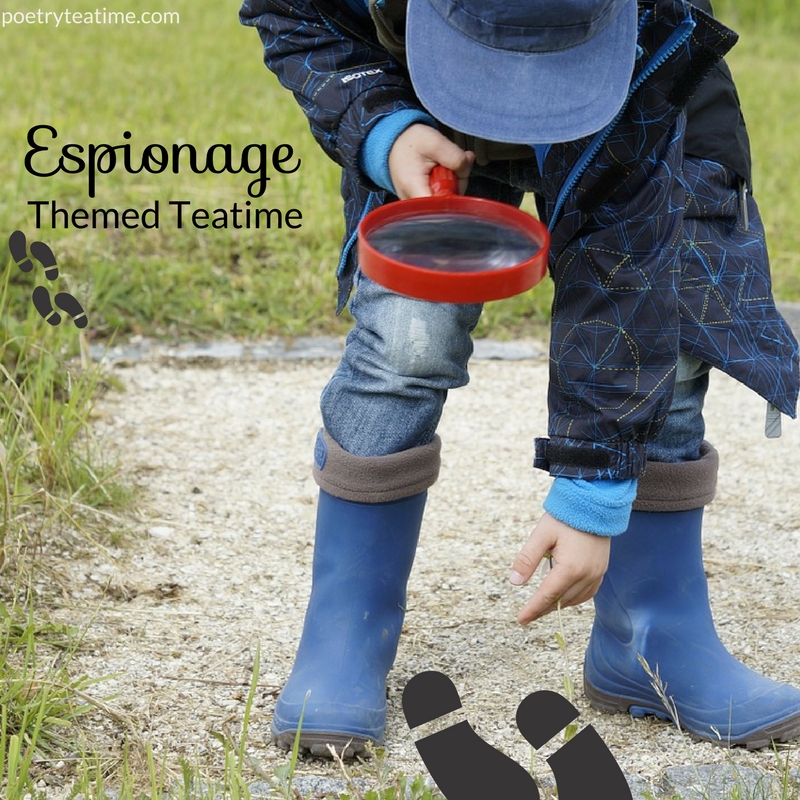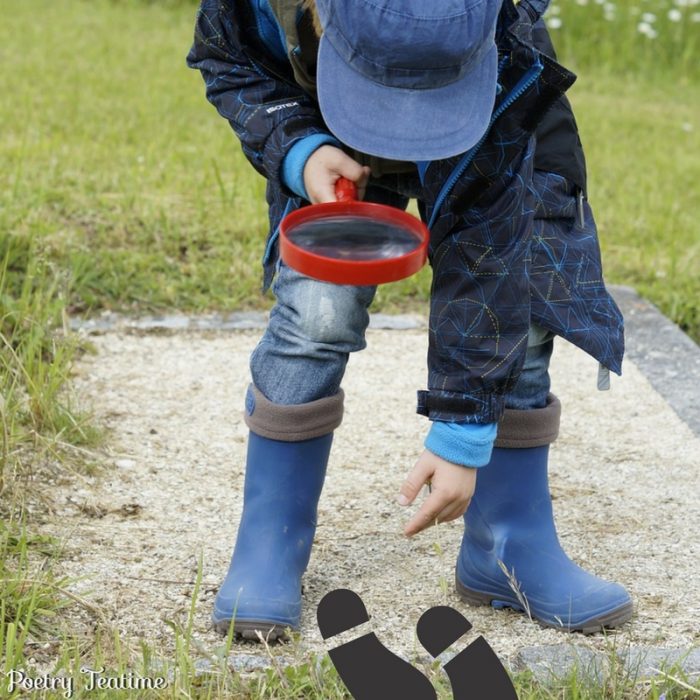Spying may conjure up the image of a suave James Bond infiltrating ballrooms in Paris or Jason Bourne caught in a thrilling car chase. While not always so glamorous, spying does require Bond-like observation skills and an eye for both the familiar and the strange. Poetry is the perfect way to sharpen your spy-related skills—even a few famous authors have had a career as a spy (see more on that below). For help sharpening your senses, check out last week’s post about the five senses in poetry. Then, come back and throw an espionage-themed poetry teatime to prepare you for a lifetime of spying!
[This post contains Amazon affiliate links. When you click on those links to make purchases,
Poetry Teatime receives compensation at no extra cost to you. Thank you!]
Let’s begin with a poem to whet our appetite for the challenging work of spying that lies ahead.
From “The Spies’ March”
By Rudyard Kipling
There are no leaders to lead us to honour, and yet without leaders we sally,
Each man reporting for duty alone, out of sight, out of reach, of his fellow.
There are no bugles to call the battalions, and yet without bugle we rally
From the ends of the earth to the ends of the earth, to follow the Standard of Yellow!
Fall in! O fall in! O fall in!
Now that we’ve been rallied into formation, check out the ideas below for some simple ways to bring the world of espionage a little closer to your living room.
Fueling Food
“On the Trail” mix: distribute bags of trail mix and tell your aspiring secret agents that these are their provisions for when they are on the trail gathering information. Let them come up with a plan for rationing their food to make it last! Inspiration: this image from Catch My Party
Adrenaline packets: in addition to tea, serve packets of Capri Sun (with the graphics covered up) as “adrenaline packets” to keep your agents fueled on the run. Inspiration: this party from Kara’s Party Ideas
Hidden messages: If you have access to fortune cookies, serve them as a snack and have each spy-in-training try to work out what they might mean. Otherwise, print off short messages, fold up the paper into small squares, and tuck them visibly into whatever snacks you are offering. (Make sure to warn the kids to expect the notes!) Inspiration: this party from Kara’s Party Ideas
Devious Decorations
Secure location: No teatime about espionage would be complete without a change in scenery. Partway through your teatime, without warning, tell the family that the meeting has been compromised and you must move to a secure location. Pick up whatever you can take with you—including a poetry book or two!—and move to a different corner of the house, garage, or the outdoors.
A tiny problem: Pick up cheap magnifying glasses from your local dollar store or grocery store and make sure everyone has one. Print off a few poems in a tiny font and have everyone try to decipher them using the magnifying glass!
Laser obstacle course: Set up a “laser” obstacle course using red streamers (string or twine works as well) and have your future spies climb under, over, and around them. Inspiration: this party from Kara’s Party Ideas
Secret Agent Activities
Write a poem in invisible ink. What’s more fun than decoding secret messages? The simplest methods just use white crayons and some watercolor paints, but you can also use a recipe that involves lemon juice or baking soda. Check out all three on this post from Mum in the Mad House.
Learn about authors and poets who were also spies, including (allegedly) Roald Dahl, Ian Fleming, the original creator of James Bond, and Graham Greene, author of The Wind in the Willows. Check out this list on Bookstr.
Search for headlines related to espionage and try to come up with a story that explains the headline. For help finding stories, check out the New York Times US Intelligence Community and Espionage pages. (Make sure to preview articles to ensure they are appropriate for your family.)
Recommended Books
Butterfly Eyes and Other Secrets of the Meadow, by Joyce Sidman (solve riddles in poetry)
Touching the Distance: Native American Riddle-Poems, by Brian Swann (guess what each poem is about, with answers at the back of the book)
When Riddles Come Rumbling: Poems to Ponder, by Rebecca Kai Dotlich (guess the riddles and puzzles in these rhyming poems)
Riddle-lightful: Oodles of Little Riddle-Poems, by J. Patrick Lewis (silly and funny poems with riddles to solve)
Edgar Allan Poe’s Pie: Math Puzzlers in Classic Poems, by J. Patrick Lewis (read these parodies of classic poetry that double as mathematical puzzles for some wacky poetic and mathematical fun!)
Recommended Resources
Check out the fascinating lesson plan produced by the International Spy Museum for the New York Times with brilliant ideas for digging deeper into the world of espionage.
Be sure to look at the International Spy Museum website for online exhibitions, lesson plans, and other resources on spying. This guide specifically geared towards writing has interesting prompts for creative writing and codes.
Read “maggie and millie and molly and may” by e.e. cummings here and try to puzzle out each object the girls find on the beach. Use the accompanying guide from Poets.org for more help.



